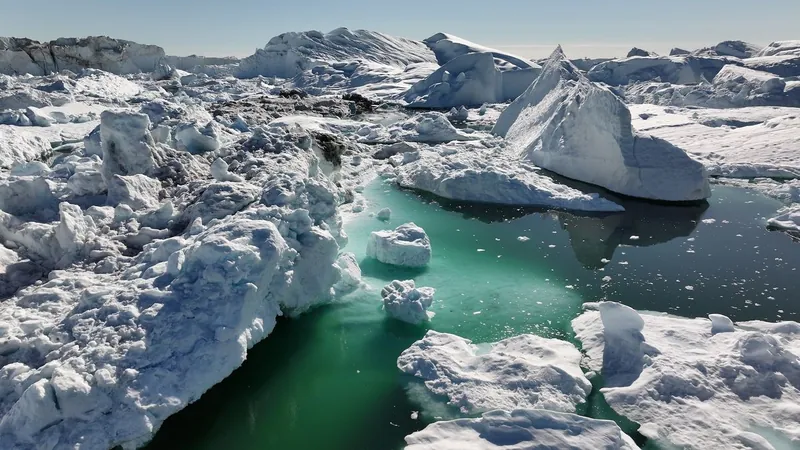
Shocking Discovery: The North Pole Might Drift Up to 90 Feet by 2100!
2025-04-08
Author: Daniel
Shocking Discovery: The North Pole Might Drift Up to 90 Feet by 2100!
In an alarming revelation, a new study outlines that the North and South poles may dramatically shift due to climate change-induced ice melt. Researchers from ETH Zurich warn that the geographic locations of Earth's poles could drift nearly 89 feet (27 meters) westward by the end of the century, igniting concerns over the potential impacts on global navigation systems.
Published in the journal Geophysical Research Letters, this pivotal research highlights the relationship between melting ice sheets, ocean mass redistribution, and the Earth’s rotational axis. As our planet's mass distribution changes—similar to a wobbling top—unprecedented shifts in the poles could be on the horizon, affecting everything from weather patterns to satellite and spacecraft navigation.
The study tracked pole movement from 1900 to 2018 and incorporated future projections based on various human-created climate change scenarios. According to their findings, under the most concerning greenhouse gas emissions trajectory, the North Pole could veer westward by over 89 feet. Even in a more favorable emissions scenario, a notable shift of 39 feet (12 meters) from its original position could still occur.
What’s more, the melting of the Greenland and Antarctic ice sheets has emerged as the largest contributor to this phenomenon, outpacing other factors such as the anticipated rebounding of the Earth's crust from past glacial movements. “What we are witnessing is a more significant impact from human actions than from the natural ice age processes,” said study co-author Mostafa Kiani Shahvandi, underscoring the urgency of the situation.
The implications extend beyond mere curiosity; as the Earth’s rotational axis shifts, it presents a real risk to satellite connections that rely on precise measurements. A shift in the axis could complicate navigation for spacecraft, making it increasingly difficult to pinpoint their exact positions in space, thereby raising concerns for both scientific missions and commercial ventures.
Looking ahead, researchers aim to delve into paleoclimate records to assess how natural climate changes have influenced pole movements in the past. This deeper understanding could elucidate the stark contrasts between today’s human-induced changes and those driven by natural forces throughout Earth's history.
As we brace for the potential consequences of this shift, the question looms: How will this impact our world and the technological systems that rely on a stable understanding of our planet's geography? The clock is ticking, and our response could redefine our future on this rapidly changing planet.

 Brasil (PT)
Brasil (PT)
 Canada (EN)
Canada (EN)
 Chile (ES)
Chile (ES)
 Česko (CS)
Česko (CS)
 대한민국 (KO)
대한민국 (KO)
 España (ES)
España (ES)
 France (FR)
France (FR)
 Hong Kong (EN)
Hong Kong (EN)
 Italia (IT)
Italia (IT)
 日本 (JA)
日本 (JA)
 Magyarország (HU)
Magyarország (HU)
 Norge (NO)
Norge (NO)
 Polska (PL)
Polska (PL)
 Schweiz (DE)
Schweiz (DE)
 Singapore (EN)
Singapore (EN)
 Sverige (SV)
Sverige (SV)
 Suomi (FI)
Suomi (FI)
 Türkiye (TR)
Türkiye (TR)
 الإمارات العربية المتحدة (AR)
الإمارات العربية المتحدة (AR)